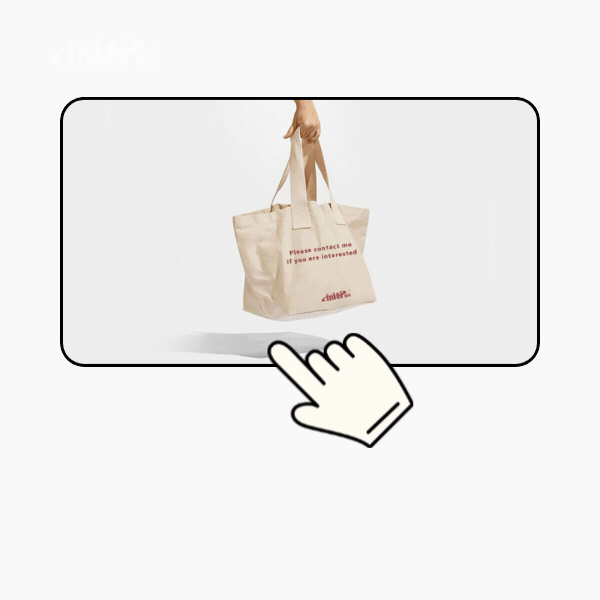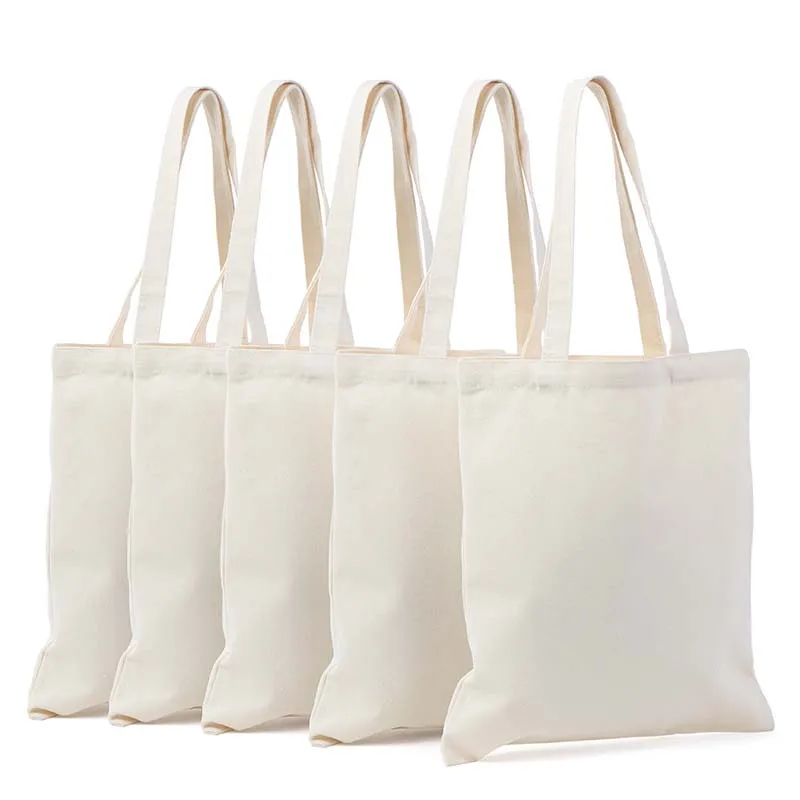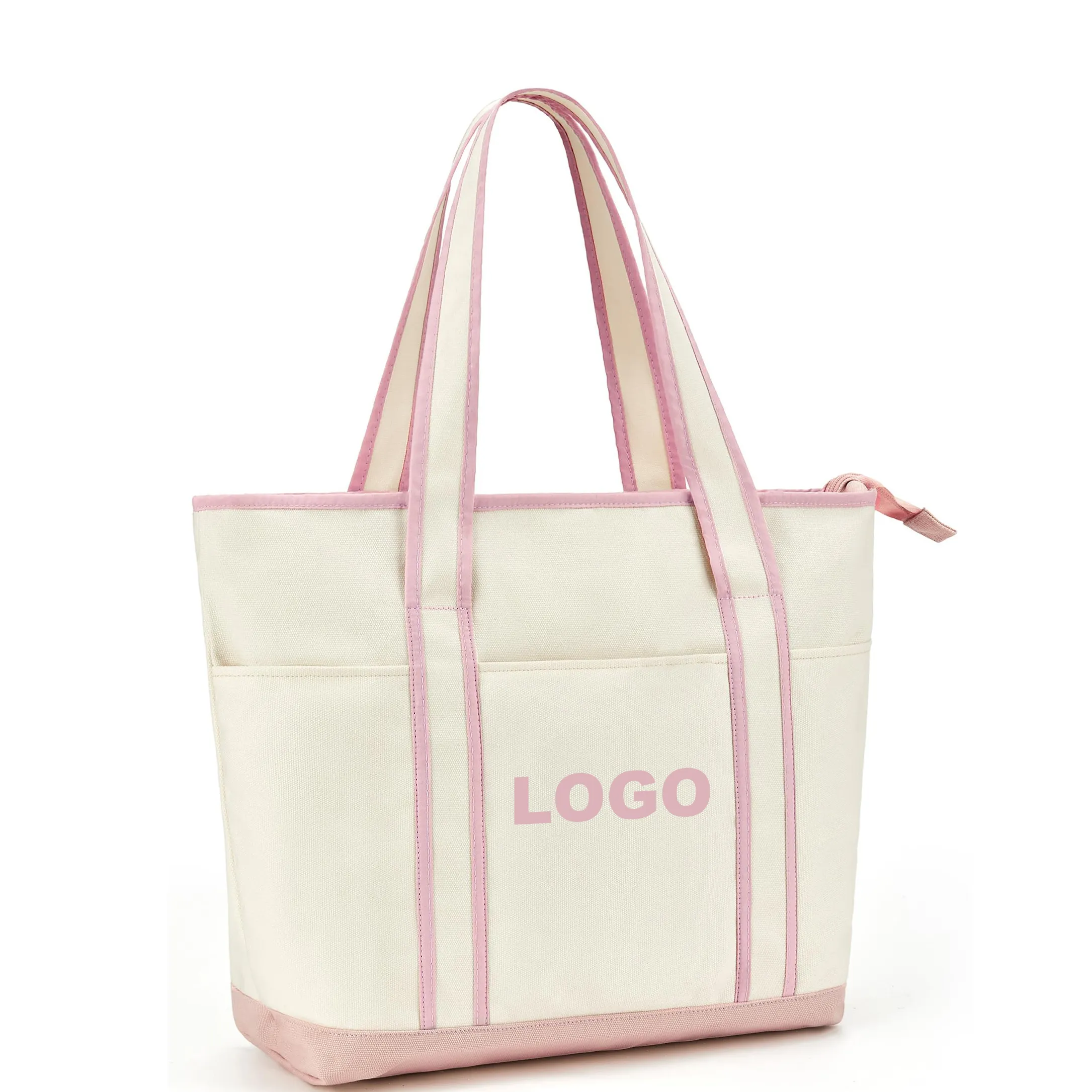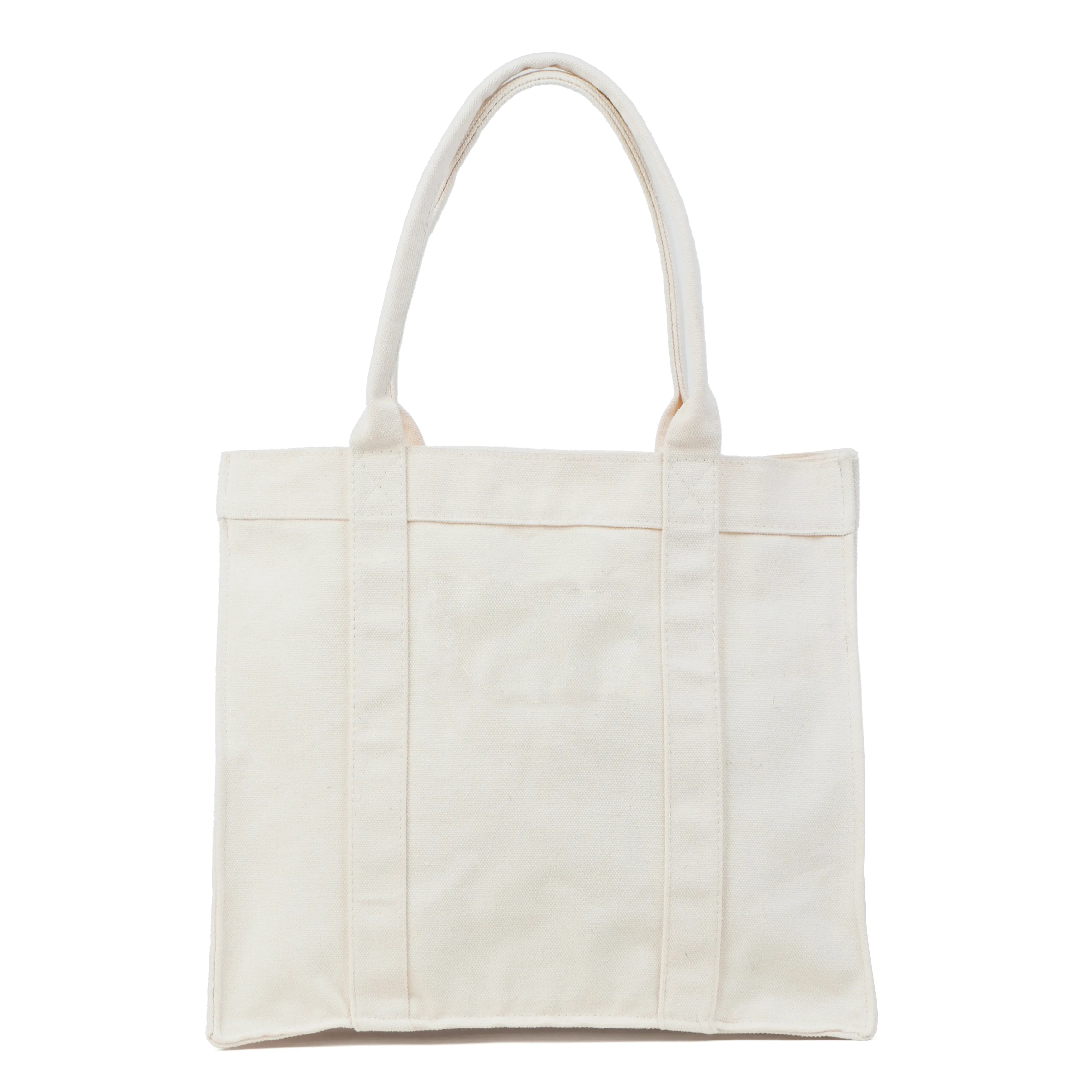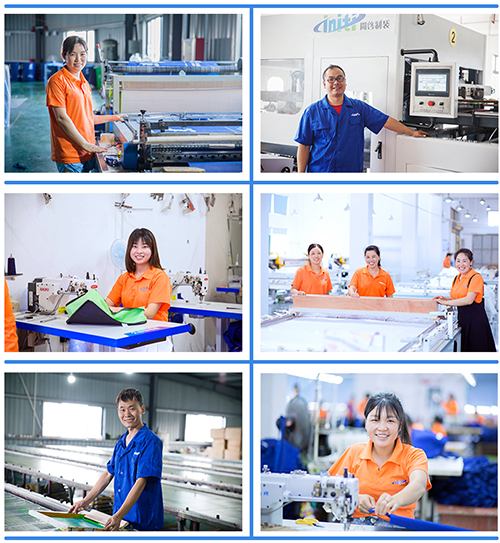Canvas vs Cotton Deciphering the Key Differences for Bags
Canvas vs. Cotton: Deciphering the Key Differences for Bags
1. Introduction: Unraveling the Fabric Duo
Walk into any retail store, browse online, or simply look around you, and you'll quickly notice the pervasive presence of two fabrics: canvas and cotton. From fashion apparel to home furnishings, and most prominently in the world of bags, these materials are ubiquitous. They often appear similar, yet they serve distinctly different purposes and offer unique characteristics that make one a better choice over the other depending on the application.
For both consumers making purchase decisions and procurement managers or brand owners choosing materials for their products, understanding the fundamental differences between canvas and cotton is not just helpful—it's crucial. While both are often made from cotton fibers, their processing and weaving techniques result in vastly different properties. This distinction directly impacts durability, aesthetics, comfort, and ultimately, the suitability of the end product.
In this comprehensive guide, we'll delve deep into what sets canvas apart from general cotton fabric, highlight their unique attributes, explore their common applications, and provide expert insights to help you make informed choices, particularly when it comes to designing or purchasing bags.
2. What is Canvas? The Unyielding Workhorse
At its core, canvas is a plain-weave fabric known for its exceptional strength and durability. While originally made from hemp, linen, or cotton, modern canvas is predominantly woven from cotton (or sometimes linen, and increasingly, synthetic fibers like polyester, though cotton canvas remains the classic). The key to its robust nature lies in its construction.
Canvas is created by using a basic plain weave, but with a significant twist: it employs two warp yarns woven tightly over one weft yarn (often referred to as a "duck" weave, as discussed in our previous article). This tightly interlaced structure, often using thick, heavy threads, results in a fabric that is incredibly strong and resistant to wear and tear. Historically, this density was achieved by using very thick threads, but modern canvas can also use more refined, tightly spun threads to achieve similar strength with a smoother finish.
Key Characteristics of Canvas:
- Exceptional Strength and Durability: Canvas is built to withstand rigorous use, heavy loads, and abrasive conditions. Its tight weave makes it resistant to tearing and stretching.
- Excellent Protective Qualities: The dense construction provides a good barrier against external elements, and when treated with wax or other coatings, it becomes highly water-resistant or even waterproof.
- Structural Integrity: Canvas is a relatively stiff and tightly woven fabric, giving it a firm hand and allowing it to hold its shape well, even under stress.
- Holds its Form: Its inherent rigidity helps prevent sagging, which is beneficial for structured items like bags or tents.
- Breathability (for cotton canvas): While dense, cotton canvas still retains some breathability inherent to natural fibers, making it less prone to trapping moisture than some synthetics.
Common Applications of Canvas:
Thanks to its resilience, canvas has a long history of use in demanding applications:
- Bags: Backpacks, tote bags (especially heavy-duty ones), messenger bags, duffel bags, tool bags, and shopping bags are prime examples.
- Footwear: Sneakers (think Converse Chuck Taylors), boat shoes.
- Outdoor Gear: Tents, tarpaulins, awnings, covers.
- Arts & Crafts: Artist's canvases for painting.
- Home Decor: Upholstery, curtains, outdoor cushions.
- Apparel: Workwear (like heavy-duty jackets or pants), rugged outerwear.
3. What is Cotton Fabric? The Versatile Comfort-Giver
When we talk about "cotton fabric" in general, we're referring to textiles made from the soft, fluffy staple fiber that grows in a boll around the seeds of the cotton plant. Cotton is one of the oldest and most widely used natural fibers globally, celebrated for its comfort and versatility.
Unlike canvas, "cotton fabric" encompasses an enormous range of weaves and textures. It can be woven into a plain weave, twill, satin, or specialty weaves, and can be fine and delicate (like voile or muslin) or sturdy (like denim or broadcloth). The threads used in general cotton fabrics are typically finer and less tightly packed than those in canvas, resulting in a softer, more pliable material.
Key Characteristics of Cotton Fabric:
- Softness and Comfort: Cotton fibers are naturally soft, making cotton fabrics comfortable against the skin. They are often less abrasive than canvas.
- Excellent Breathability: Cotton is highly breathable, allowing air to circulate freely. This helps regulate temperature and prevents moisture build-up – a key reason for its popularity in clothing.
- Hypoallergenic: Natural cotton is generally gentle on sensitive skin and less likely to cause allergic reactions compared to some synthetic alternatives.
- Absorbent: Cotton is highly absorbent, making it good for towels and clothing designed to wick away perspiration.
- Dye-Friendly: Cotton accepts dyes well, producing vibrant and lasting colors.
- Easy Care: Most cotton fabrics are machine washable and relatively easy to care for, though they can be prone to wrinkling and shrinkage.
Common Applications of Cotton Fabric:
Cotton's versatility makes it a staple across countless product categories:
- Apparel: T-shirts, jeans, dresses, shirts, underwear, socks – the list is endless.
- Home Textiles: Bedding, towels, dishcloths, tablecloths.
- Bags: Lightweight tote bags, drawstring bags, produce bags, dust bags for luxury items.
- Hygiene Products: Cotton balls, swabs, bandages.
Both in the Bag Realm: How They Coexist
Despite their differences, both canvas and general cotton fabrics certainly have their place in the bag industry. Canvas bags are often chosen for their rugged durability and ability to carry heavy items, while cotton bags are preferred for their lightness, softness, and often, their lower cost and simpler aesthetic. Understanding which one suits your specific bag need is the next critical step.
4. Canvas vs. Cotton: Key Fabric Differences at a Glance
To truly grasp the distinction, let's break down the core differences between these two incredibly useful materials:
Material & Weaving: The Foundation
- Canvas: Almost exclusively employs a plain-weave often called "duck" weave, characterized by extremely tight interweaving of two warp yarns over one weft yarn, or otherwise very heavy, coarse single yarns. This creates a dense, thick, and typically robust textile. While often cotton-based, the definition of canvas leans heavily on its weave structure and density more than just its fiber content.
- Cotton Fabric (General): Refers to any fabric made from cotton fibers. It can be woven in a plain, twill, satin, or any other pattern. The yarns are generally finer, and the weave is typically looser than canvas, resulting in a lighter and more pliable material. Think T-shirt jersey (knit, not woven), broadcloth, lawn, or even denim which is a twill weave cotton.
Durability: The Ultimate Test
- Canvas: The clear winner for durability. Its tight weave and often heavier yarn make it exceptionally resistant to tears, punctures, and abrasion. It’s designed for heavy-duty use and longevity.
- Cotton Fabric (General): Varies greatly. While some heavy cottons (like denim) are durable, most common cotton fabrics (like those used for T-shirts or light tote bags) are significantly less durable than canvas. They are more prone to tearing, stretching, and wearing out with heavy use.
Breathability & Comfort: The Feel Factor
- Canvas: While not as breathable as lighter cottons, cotton canvas still allows some air circulation due to its natural fiber composition. It has a stiffer hand, which can be less "comfortable" against the skin in direct clothing applications but provides excellent structure for bags.
- Cotton Fabric (General): Highly breathable and soft. This makes it supremely comfortable for clothing worn next to the skin and ideal for applications where a soft, flowing drape is desired.
Weight & Care: Practical Considerations
- Canvas: Typically heavier due to its dense weave and thicker yarns. It can be laundered, but often requires cold water and air drying to maintain its structure and prevent excessive shrinking. It's less prone to wrinkling than lighter cottons but can still crease. Waxed canvas should not be machine washed.
- Cotton Fabric (General): Varies from very light (voile) to moderately heavy (denim). Most cotton fabrics are relatively easy to care for, but are known for wrinkling easily and can be subject to significant shrinkage if washed in hot water or tumble dried on high heat.
5. Canvas vs. Cotton Bags: Decoding the Best Choice for Your Carry Needs
Now, let's zoom in on their application in the bag market, where their distinct characteristics become paramount.
Durability & Strength: The Power Difference
- Canvas Bags: These are the champions of endurance. Their robust weave makes them significantly more durable and capable of bearing heavier loads compared to most cotton bags. If you need a bag for groceries, books, heavy tools, or extended travel, canvas is the clear winner. They resist abrasions and tears much better, offering a longer lifespan, especially under strenuous use.
- Cotton Bags (General): More suitable for lighter-duty purposes. While a basic cotton tote is fine for carrying a few light items, they are not designed for heavy, sharp, or abrasive contents. They are more prone to tearing at seams or stretching out of shape when overloaded. Ideal for lighter purposes like carrying small personal items, produce, or as a reusable shopping bag for lighter purchases.
Weight & Comfort: Handling and Feel
- Canvas Bags: Typically heavier and thicker. This gives them a more substantial, structured feel. They often stand upright on their own, making packing and accessing contents easier. The thicker fabric can sometimes feel less 'soft' but contributes to its robust nature.
- Cotton Bags (General): Generally lighter and more pliable. They are easy to fold and store compactly. Their softness makes them comfortable to carry against the body, though they offer less structure and may sag when filled.
Look & Style: Aesthetic Appeal
- Canvas Bags: Project a sense of rugged utility, casual chic, or even vintage sophistication. Their substantial nature lends itself well to structured designs, making them popular for fashion-forward commuters, students, artists, and outdoor enthusiasts. They can be dyed in rich, deep colors and their texture often adds character. Waxed canvas bags, in particular, offer a distinct, weathered look that is highly prized.
- Cotton Bags (General): Offer a simpler, more natural, and often understated aesthetic. They are popular for minimalist designs, eco-friendly branding, and DIY projects. Their softer drape creates a more relaxed look. They are versatile for various color treatments and can convey a clean, fresh image.
Printing & Branding: Making Your Mark
- Canvas Bags: The smooth, tight surface of canvas, especially higher-grade duck canvas, provides an excellent foundation for high-quality printing. Logos, intricate designs, and vibrant solid colors show up crisply and retain their integrity due to the fabric's stability. This makes canvas a premium choice for brands looking for a sophisticated and lasting promotional item or retail product.
- Cotton Bags (General): While printable, the results can vary depending on the specific cotton weave and thickness. Lighter, looser weaves might show some print imperfection or stretch over time. They are often chosen for a more organic, earthy brand image, and can be very effective for simple logos or text, especially when aiming for a natural or environmentally conscious message. The absorbency of cotton can sometimes lead to slightly less sharp print edges compared to very tight canvas weaves.
6. Which Bag Should You Choose? Tailoring Your Decision
The choice between canvas and general cotton for bags ultimately depends on your specific needs, budget, and brand positioning. There's no universal "better" material, only the right material for the right purpose.
For Retail and Fashion Brands: Canvas Bags – Quality, Durability, and Style
If your brand prioritizes perceived quality, durability, and a blend of fashion with function, canvas bags are often the superior choice. This holds true for:
- Designer Totes & Handbags: Canvas offers the structure and longevity that justify a higher price point, appealing to customers seeking premium, long-lasting accessories.
- Backpacks & Messenger Bags: For those carrying laptops, books, or daily essentials, the robustness of canvas ensures items are protected and the bag maintains its aesthetic appeal over prolonged use.
- Work & Utility Bags: Brands catering to specific trades or hobbies (e.g., photography, art, woodworking) will find canvas the ideal material for tool bags, gear carriers, and heavy-duty satchels.
- Upscale Promotional Items: Using a high-quality canvas bag as a promotional item reflects positively on your brand’s commitment to quality and leaves a lasting impression. Print quality on canvas is generally superior, allowing for crisp, impactful branding.
Canvas exudes a sense of heritage, reliability, and authentic craftsmanship. It develops a beautiful patina with age, adding character, which many consumers highly value.
For Promotional and Gift Items: Cotton Bags – Lightweight, Eco-Friendly, and Cost-Effective
When the primary goals are lightness, broad appeal, ease of distribution, eco-consciousness, and cost-effectiveness, general cotton bags (especially standard cotton totes) shine. These are excellent for:
- Giveaways & Event Swag: Lightweight cotton totes are budget-friendly and easy to transport in bulk, making them perfect for conferences, trade shows, and marketing events.
- Eco-Friendly Shopping Bags: For promoting sustainability or as a simple reusable grocery bag, cotton's natural fiber and softness resonate with an eco-conscious message.
- Lightweight Retail Packaging: As a simple, branded packaging solution for smaller purchases, cotton offers a soft, pleasant touch.
- Brand Messaging with a Natural Aesthetic: If your brand emphasizes natural, organic, or minimalist values, the inherent simplicity and softness of cotton align well.
While generally less durable than canvas, cotton bags are incredibly versatile for lighter applications and provide a cost-effective way to get your brand into customers' hands with a functional, reusable item.
Advice for Business and Wholesale Clients: Strategic Material Selection
For businesses making bulk purchases or sourcing materials for their product lines, the decision should be a strategic balance of budget, perceived value, functionality, and brand identity.
- High-End or Durable Product Lines: Invest in canvas. Its resilience and premium feel will enhance your product's appeal and longevity, justifying a higher price point and building customer loyalty.
- Value-Oriented or Promotional Lines: Opt for cotton. It offers an excellent balance of brand visibility, usability, and cost-effectiveness for broader distribution.
- Sustainability Focus: Both materials can be sustainable, but look for organic cotton or recycled cotton options for both canvas and general cotton to amplify your eco-friendly message.
- Printing Needs: If intricate, crisp graphics are crucial, higher-grade canvas will likely deliver superior results. For simpler designs or a more rustic look, cotton is perfectly adequate.
By carefully considering these distinctions, you can ensure that the bags you choose or produce not only meet their functional requirements but also perfectly align with your brand's image and resonate with your target audience.
Final Takeaway: The Power of Informed Choice
In the vast landscape of textiles, canvas and cotton stand out as two distinct yet related powerhouses. While both derive from the same natural fiber, their fundamental differences in weave and density create a world of variation in terms of durability, feel, and application. Canvas is the sturdy protector, built for endurance and structural integrity, perfect for heavy-duty bags that demand resilience and a touch of rugged style. Cotton, on the other hand, is the soft, breathable, and versatile workhorse, ideal for comfort, lightness, and broad, cost-effective distribution.
Understanding these key differences empowers you to make informed decisions that align with your specific needs, whether you're a discerning consumer seeking the perfect everyday carry or a brand forging its identity through thoughtfully selected materials. By choosing wisely between canvas and cotton, you're not just selecting a fabric; you're defining the functionality, aesthetic, and ultimate value of your bag, ensuring it serves its purpose beautifully and stands the test of time.
Hot Tags:Shopping Bag China, suppliers, manufacturers, factory, wholesale, in bulk, for sale,tote bag ideas,canvas bags for storage,cotton shoulder bag, rpet bag, custom garment bags,canvas drawstring bags,Insulated lunch cooler bag,makeup cosmetic bag for sale,Grocery and Shopping tote bag,Beach Accessories,Jute/hemp/burlap tote bag,Corduroy tote bag,Travel bag,Linen bag,Paper bag

